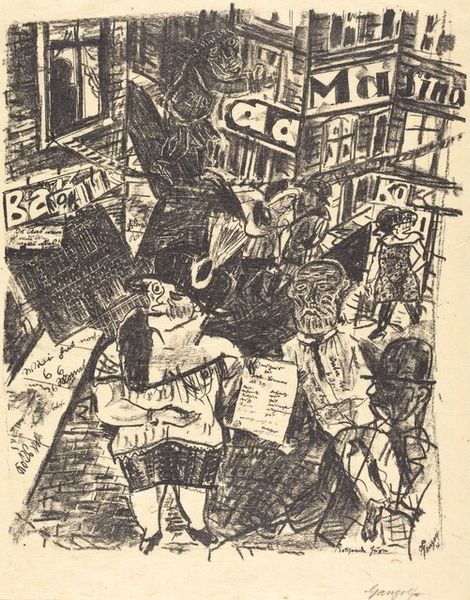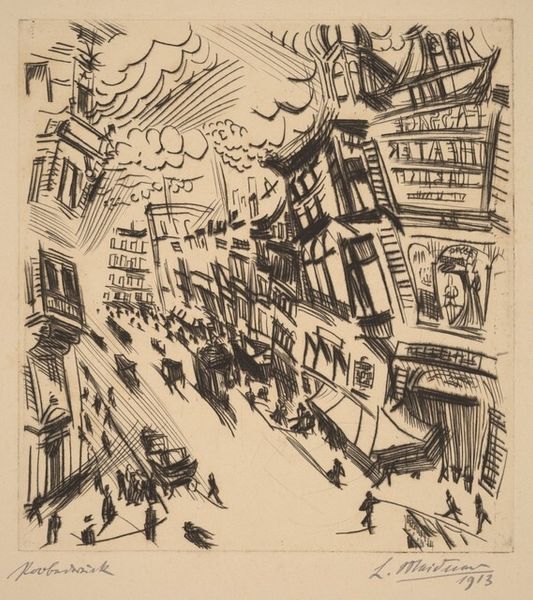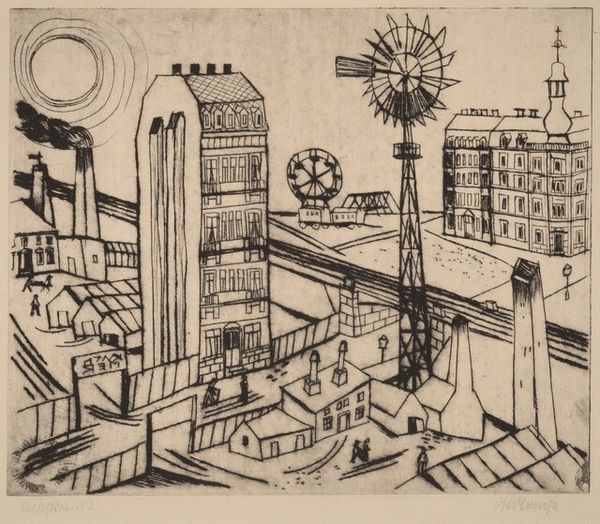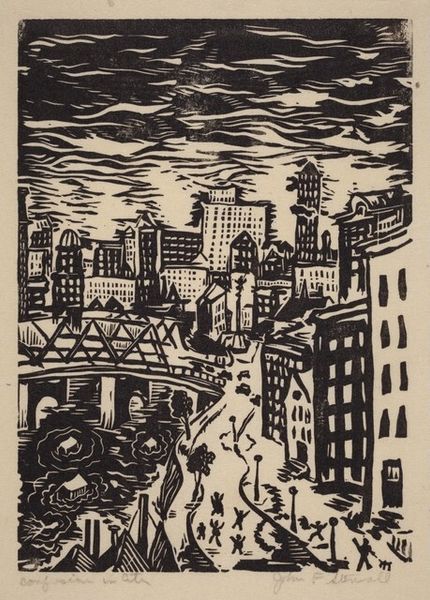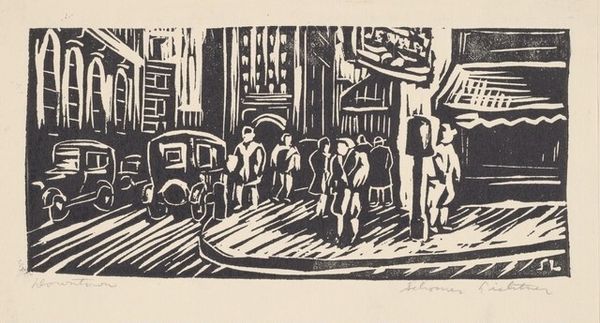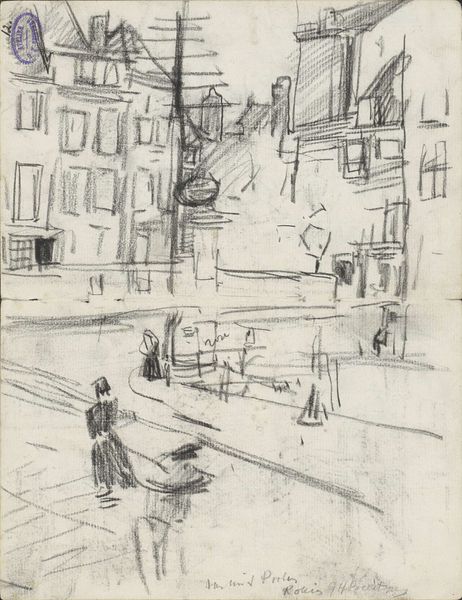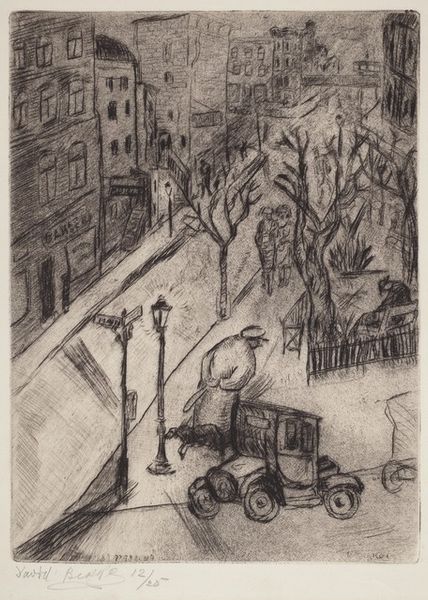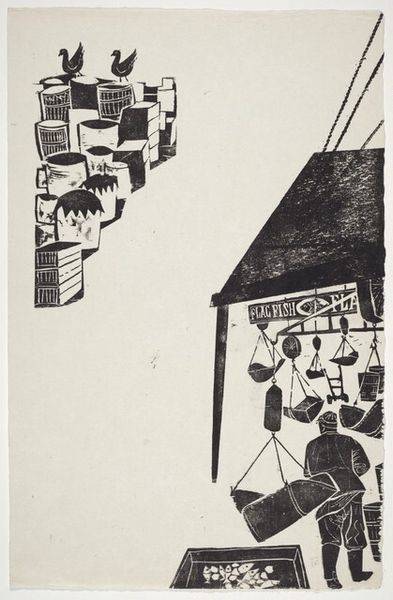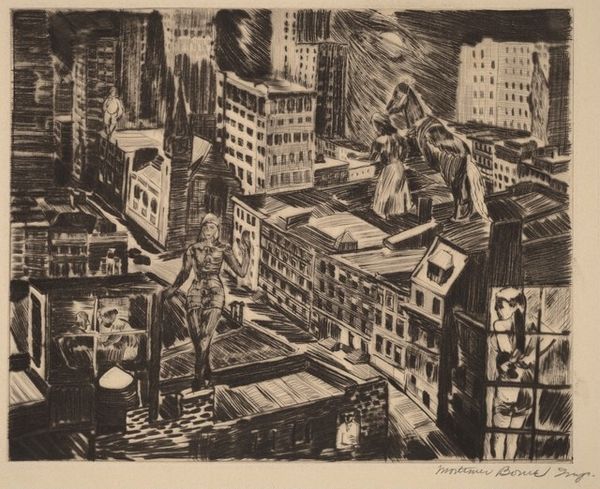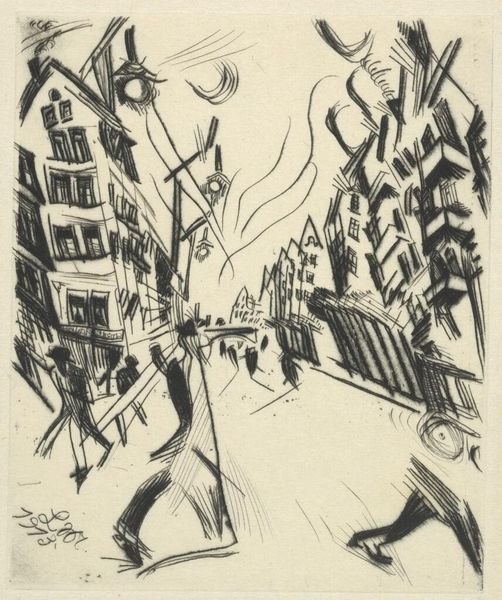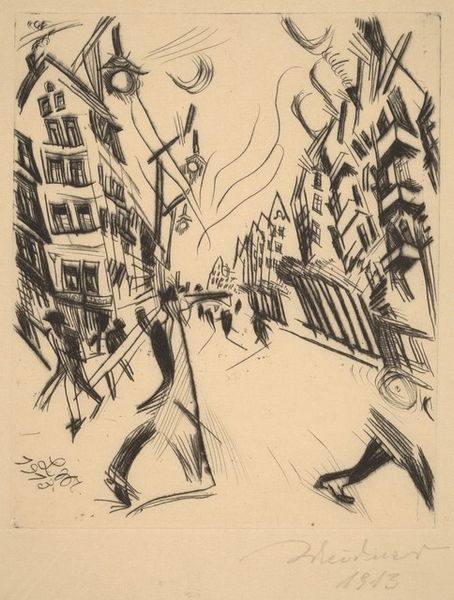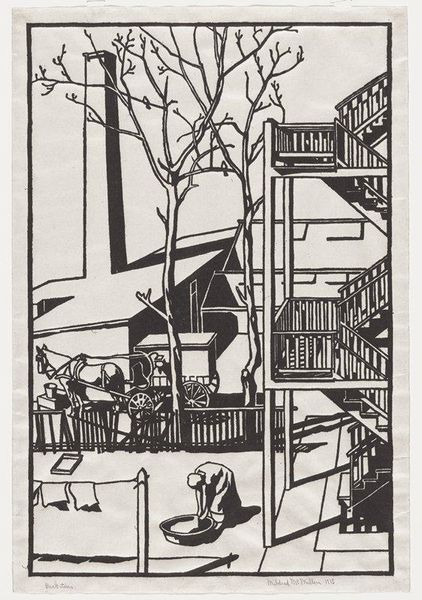
drawing, print
#
drawing
#
pen drawing
# print
#
german-expressionism
#
expressionism
#
cityscape
Copyright: National Gallery of Art: CC0 1.0
Curator: Max Beckmann’s 1922 print, "Wooden Bridge," offers a stark vision of urban life in Germany during the interwar period. It’s rendered in the stark black and white typical of Expressionist printmaking. Editor: My first thought is—claustrophobic. It feels like a stage set, but one designed for some intensely brooding drama. The angles are sharp, the light is oppressive… Curator: Observe how Beckmann uses line. Thick, emphatic strokes define every object, every figure. Notice how the signs in the background appear almost illegible, flattened against the picture plane, contributing to that sense of visual density. Semiotically, this disruption reflects the broader societal disruption of the time. Editor: There’s this strange disjunction, though. On one hand, it’s chaotic, anxious. But look at the little family on the bridge—almost quaint, like a memory clinging to this grim cityscape. They're almost swallowed by the overbearing structures around them. What's up with that? Curator: Consider Expressionism’s inherent tension between external reality and subjective experience. While presenting recognizable urban elements, the distorted perspective and emphatic linework externalize a feeling of alienation and anxiety. Beckmann gives us the material city as a means of describing the emotional inner city. Editor: So, the woodcut, the starkness... it’s not just a style choice. It *is* the statement. You know, like anxiety carved directly onto paper. It's heavy. You can almost smell the smoke and feel the tension hanging in the air. I keep coming back to this feeling of being boxed in. It’s a shared experience I think, even today. Curator: Precisely. By abstracting and compressing the space, Beckmann amplifies the psychological weight. The city transforms from a place of progress into a site of psychic constraint, a perfect exemplar of Expressionist themes. Editor: I see that this image can also trigger feelings about today. The sharp lines give you an unnerving, unsettling experience; the scene somehow feels out of joint, like an off-kilter memory of a familiar place. Curator: Indeed. And perhaps that uncanny familiarity ensures the artwork will continue to resonate with viewers.
Comments
No comments
Be the first to comment and join the conversation on the ultimate creative platform.

